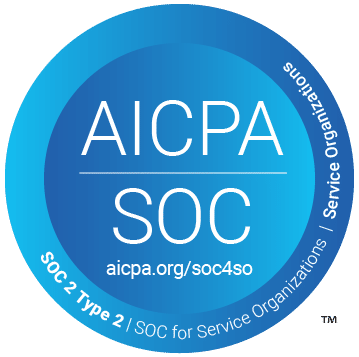In January of 2021 Centers for Medicare and Medicaid Services (CMS) announced that they would be auditing compliance with the National Background Check Program for Long-Term Care Providers. The National Background Check Program was enacted by legislation in 2010 to assist states in developing and improving systems for conducting federal and state background checks.
In its announcement of this audit as part of the OIG annual workplan, CMS stated that:
“Prior OIG work has shown that not all States complied with the National Background Check Program for Long-Term Care Providers. We will determine whether Medicaid beneficiaries in nursing homes in selected States were adequately safeguarded from caregivers with a criminal history of abuse, neglect, exploitation, mistreatment of residents, or misappropriation of resident property, according to Federal requirements.”
Federal regulation 42 CFR 483.12(a)(3) provides beneficiaries who rely on long-term care services with protection from abuse, neglect, and theft by preventing prospective employees with disqualifying offenses from being employed by these care providers and facilities.
HHS OIG Background Check Program Findings Report
In September of 2020, the United States Department of Health and Human Services, Office of Inspector General (HHS-OIG) published a 38-page report titled National Background Check Program for Long-Term-Care Providers: Assessment of State Programs.
The National Background Check Program is a voluntary grant program. States participating in the National Background Check Program must meet a variety of requirements (referred to as “Program requirements”) to guide them in developing systems for conducting background checks. States have some flexibility in how they implement Program requirements. For example, States must define “direct patient access employees,” and have some flexibility in determining which types of prospective employees to include in its Background Check Program.
The requirements evaluated in this report identify the types of prospective employees who should receive background checks, the sources that are used for conducting background checks, and the continuous monitoring of employees’ criminal histories. In this most recent report, which is the fourth in a series of five reports, HHS OIG reviewed 13 program requirements.
The thirteen program requirements these states were evaluated against in the September 2020 report are as follows:
> Determine which individuals are direct patient access employees
> Require all prospective direct patient access employees to undergo background checks
> Include the nine facility and provider types defined by the Program
> Identify disqualifying offenses
> Establish a Statewide program
> Collect applicants’ fingerprints for Federal/State checks
> Conduct checks of Federal criminal history
> Conduct checks of State criminal history
> Conduct checks of State abuse/neglect registry for applicants’ current States of residence
> Conduct checks of State abuse/neglect registry for applicants’ prior States of residence
> Conduct search of records of any proceedings in the State that may contain disqualifying information
> Notify facilities and providers of convictions identified through continuous monitoring
> Report convictions to required databases
Hawaii, Ohio, Oregon and Puerto Rico concluded their participation in the program in 2019. Those four “states” were the subject of this most recent review. The September 2020 report found that “three of the four States were unable to implement all selected program requirements, and three States did not report sufficient data to accurately assess program outcomes.” Assessment of State Programs Report, Page 2.
It appears that, as a result of the 2020 report findings, the OIG’s 2021 workplan now includes reviewing how states that have accepted this grant funding and are participating in the program are complying with the National Background Check Program requirements.
The practical impact of this 2021 audit, and CMS’s plan to evaluate whether Medicaid beneficiaries in audited nursing homes were adequately safeguarded, may include looking at state action under this grant-based federal program. However, specific cases of negligence and abuse that result from inadequate safeguards associated with background check negligence will no doubt catch the attention of regulators. Therefore, it is important that nursing homes and assisted living and long-term care facilities carefully comply with their state and federal background check mandates. It is also important that such facilities conduct comprehensive criminal background checks of prospective employees as well as annual background checks or some form of comprehensive monitoring thereafter.
Negligent Hiring
An additional and equally significant reason for nursing home providers to maintain comprehensive and compliant criminal background check involves the risk of “negligent hiring.”
Under the doctrine of negligent hiring, an employer is liable for harm its employees inflict on third parties when the employer knew or should have known of the employee’s potential risk to cause harm, or if the risk would have been discovered by a reasonable investigation.
In 2011, one year after the National Background Check Program law was enacted, HHS OIG conducted its first audit of the program with the following findings:
> Almost all nursing facilities employed one or more individuals with at least one criminal conviction,
> 92 percent of nursing facilities employed at least one individual with at least one criminal conviction,
> Nearly half of nursing facilities employed five or more individuals with at least one conviction,
> Forty-four percent of employees with convictions were convicted of crimes against property (e.g., burglary, shoplifting, writing bad checks),
> Overall, five percent of nursing facility employees had at least one conviction in FBI-maintained criminal history records,
> Most convictions occurred prior to employment, and
> Eighty-four percent of employees with convictions had their r most recent conviction prior to their beginning date of employment.
Given the noted degree of criminal convictions in this employee population, if a nursing home failed to conduct appropriate pre-employment screening, including a criminal background check, and subsequently hired an employee who caused harm a nursing home resident with conduct reasonably related to a prior criminal conviction, it is highly likely that a court could find that the nursing home liable for negligently hiring the perpetrating employee. For example, this could occur when a nursing home hires an employee with an assault conviction who then assaults and harms a patient.
To prevent compliance challenges with HHS OIG’s 2021 workplan audit on this topic as well as mitigate the risk of negligent hiring liability, Streamline Verify recommends screening of nursing home job applicants and employees against licensing lists as well as federal exclusion databases (such as LEIE and SAM) and state exclusion databases. Streamline Verify published an article on background screening that may prove helpful.
To assess whether your applicant review process is comprehensive, you may want to also consider the following:
> SSN Validation –The first check should verify the identity and the integrity of an applicant; this check confirms that applicant is using a valid social security number.
> SSN Name and Address Trace – Before running a criminal search, an objective source should be used to tell you what jurisdictions the applicant has actually lived in. This is preferable to relying on what the applicant noted on the application.
> Comprehensive Criminal History Search – Includes multiple county checks or statewide repository checks to cover the addresses provided by the applicant and disclosed on Name & Address Trace.
> Sex Offender Registry – Confirm that the applicant has no history of committing felony and misdemeanor convictions of any sexual assault, aggravated sexual assault, aggravated criminal sexual contact, and/or kidnapping.
> Previous Employment Verification – Make sure the person hired really has the experience claimed by verifying dates of employment, position/title, salary, etc.
> Education Verification – Confirm that all noted education was actually received.
Conclusion
The 2021 audit of compliance with the National Background Check Program is intended to assess whether states that accept Program funding are meeting Program requirements and more importantly, whether residents in long term care facilities are adequately protected from abuse, neglect and theft by unqualified staff. These care facilities can avoid negligent hiring by regularly reviewing the OIG’s LEIE and the other lists noted above which Streamline Verify can facilitate.




































